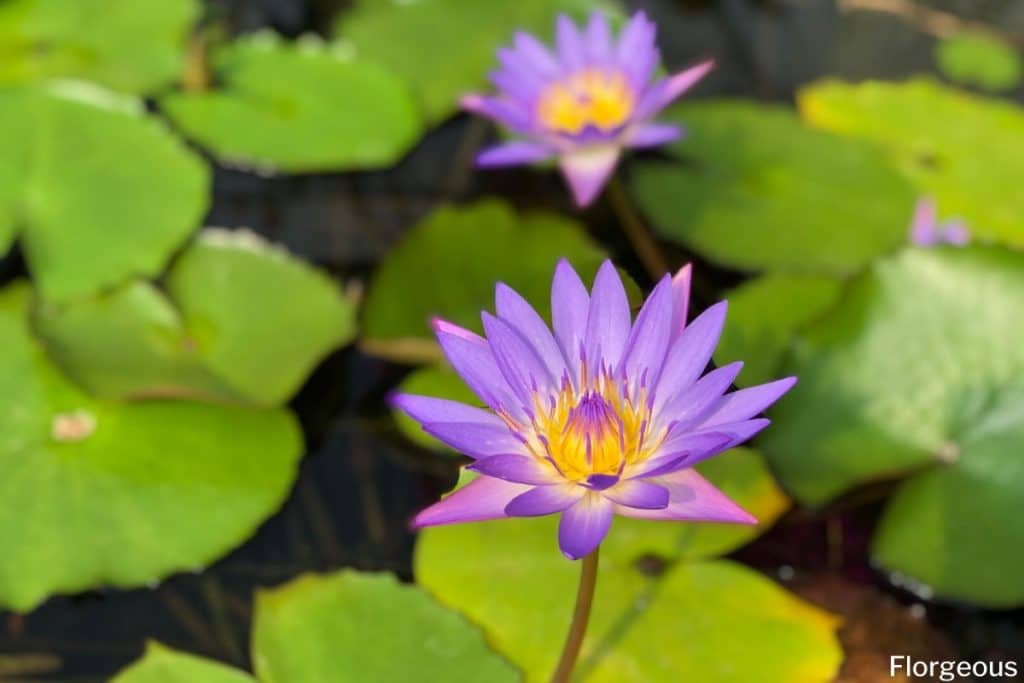Water lilies are one of the most ancient types of plants that have ever existed. They have been around for at least 130 million years (1).
- Description and Characteristics
- Cultivation and Care
- Common Types of Water Lilies
- Pink Water Lily (Nymphaea darwin)
- Fragrant Water Lily (Nymphaea odorata)
- Colorado Water Lily
- Afterglow Water Lily
- Arc en Ciel Water Lily
- Marliacea Carnea Water Lily
- Rembrandt Water Lily
- Alba Water Lily
- Mrs. George H. Pring Water Lily
- Pygmaea Rubra Water Lily
- Cape Blue Water Lily (Nymphaea capensis)
- Midnight Water Lily
- Carolina Sunset Water Lily
- Chromatella Water Lily
- Pygmaea Helvola Water Lily
- Luciana Water Lily
- Emily Grant Hutchings Water Lily
- Giant Amazon Water Lily
- What does water lily symbolize?
- Conclusion
The water lily plant has had a starring role in many cultures around the world, thus, the ancient Egyptian civilization used to worship this type of plant as well, because they knew of all the benefits that are associated with these plants.
And because they can be found virtually everywhere, they are also one of the most photographed plants in the world, as photographers love the colors and uniqueness of this plant.
Water lilies are also known for being fairly easy flowers to grow, this is why they can be found in home gardens and ponds, but, it can be argued that the most beautiful and the biggest water lilies are usually found in areas where freshwater is found as well, as they thrive in wet climates.
If you would like to know more about water lily, then continue reading this article!
Description and Characteristics
Family and Species
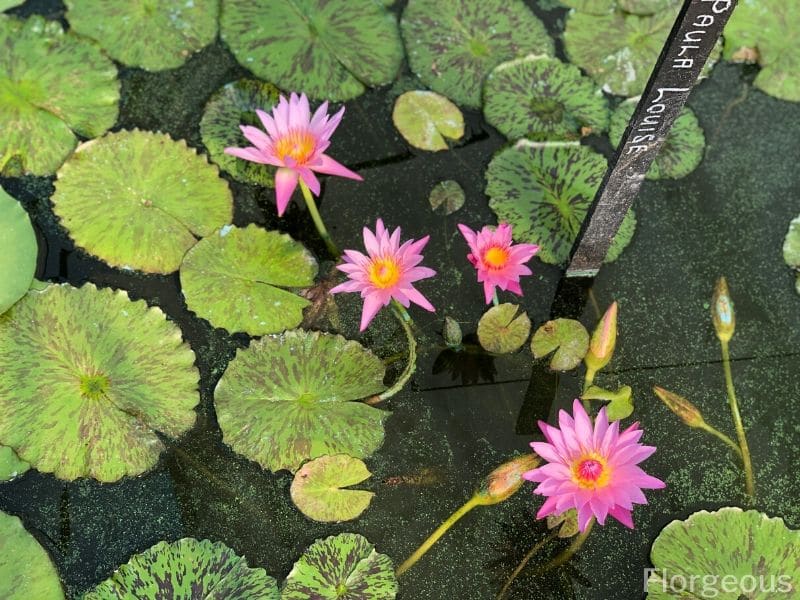
Water lilies come from three different families, which are the Hydatellaceae, the Nymphaeaceae, and the Cambobaceae.
In this article, the focus will be placed on the Nymphaeaceae’s family since they have the most subspecies, and they are: Nymphaea, Euryale, Barclaya, Nuphar, Victoria, and Ondinea.
There are, at least, 60 species of water lilies, and they can be found all over the world as they are very tolerant of temperate and tropical climates.
Flowers
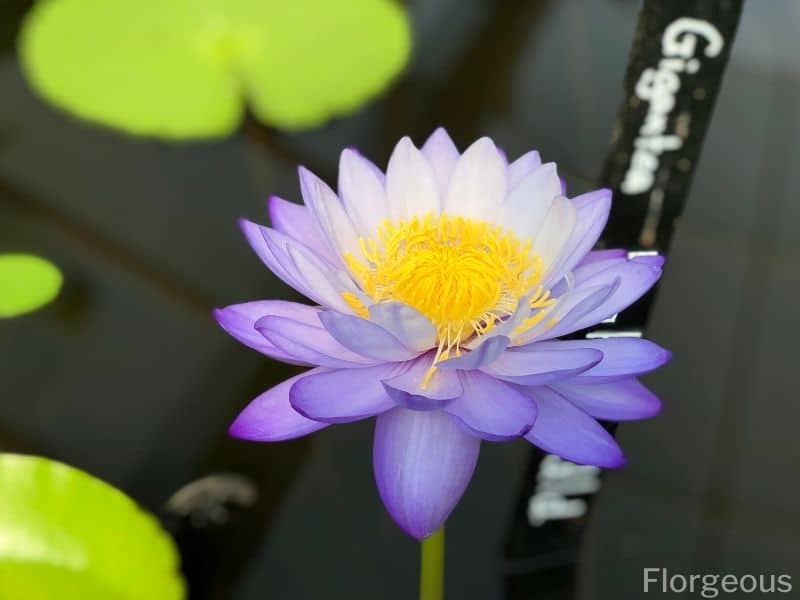
Water lilies have beautiful flowers, and they have a strong fragrance, however, these flowers tend to last up to four days. These species of plants are great for having in ponds, as they give fish much-needed shade, while also serving as a shelter to hide from predators.
Also, water lilies are known for accommodating frogs or any other amphibious species that want to have a rest, as these flowers are very big and spacious.
Color
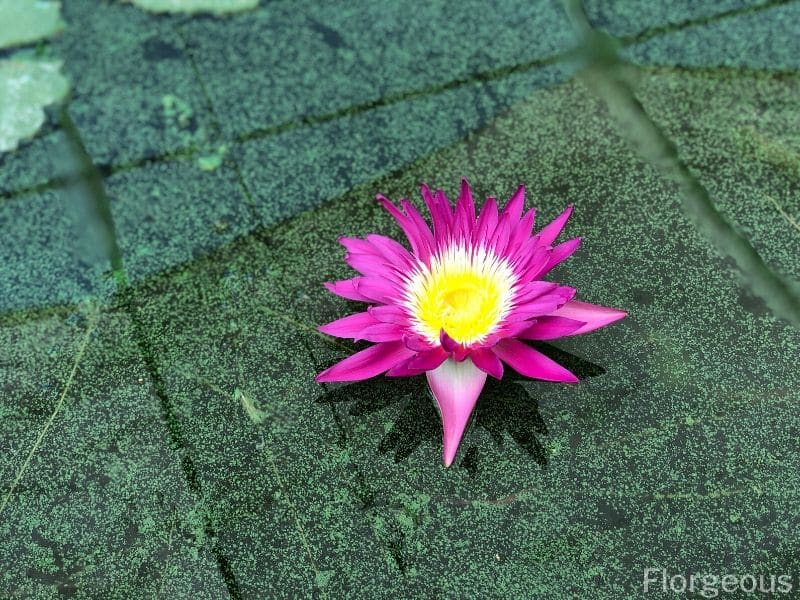
Water lilies can have different colors, amongst them are pink, blue, red, white, purple, and even black. In fact, they are one of the most diverse flowers in terms of the wide range of colors they can have (2).
Leaves
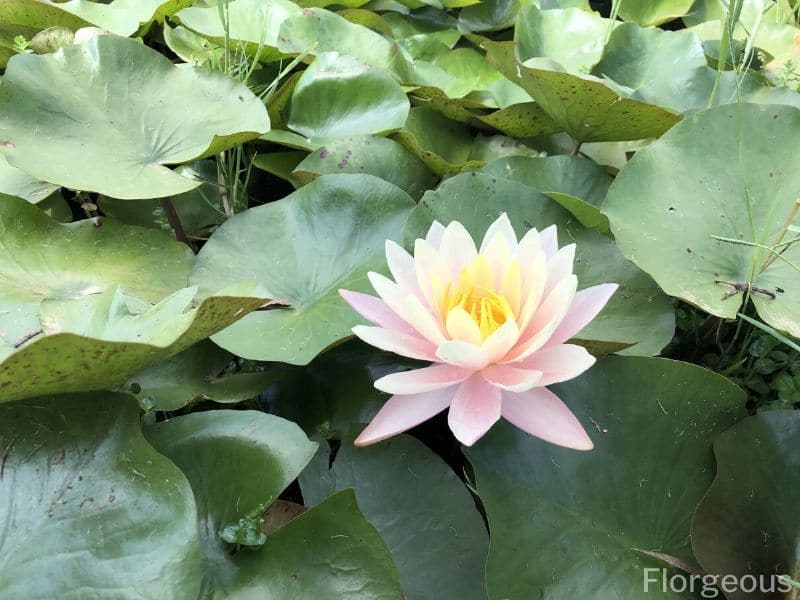
Their leaves are called lily pads, and they tend to be big. Water lilies tend to have a fruit that can be eaten, and the seeds found inside of the fruit are sought-after.
Cultivation and Care
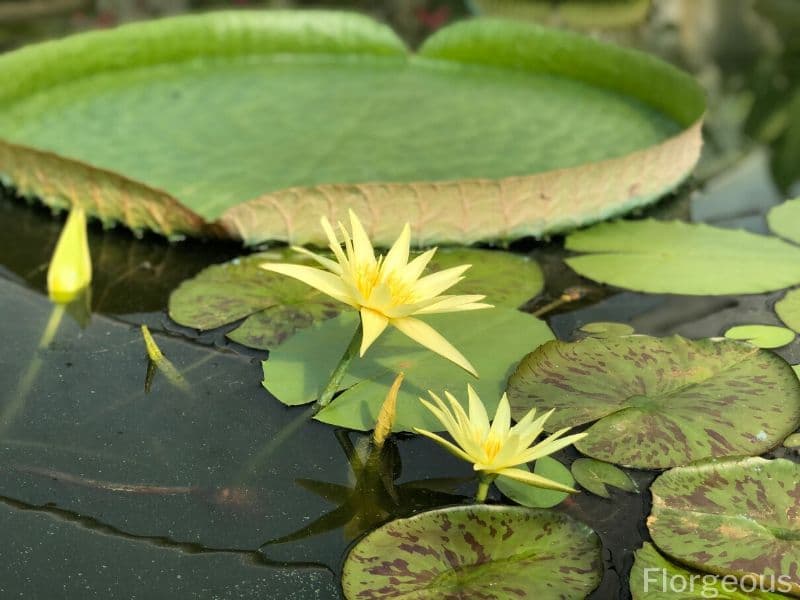
One of the biggest problems when cultivating water lilies is that they can propagate easily and quickly, thus, the space they are in becomes overcrowded.
In addition, they can suffer from midge larvae, and, if it’s left untreated, they can cause serious damage to the lily pads.
Water lilies are also preferred to be eaten by beetles, so, if you would like to preserve your plants, then do so by simply picking these insects with your hands and remove them from your flowers (3).
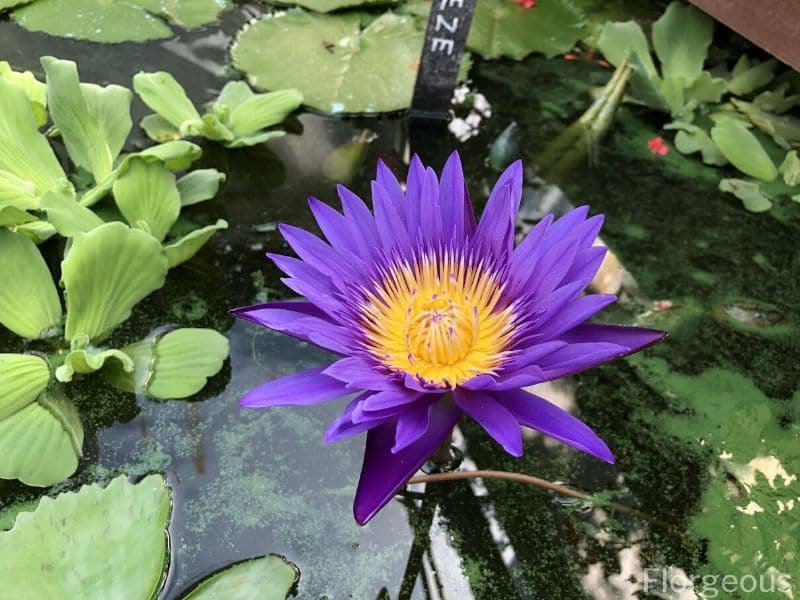
And what happens when water lilies start to grow uncontrollably in your aquarium or pond? Their lily pads will start to die, and this too will affect the rest of the plant, eventually.
You should trim the plants regularly, and, when doing so, try to do it from the base of the plant, this way you will allow your plant to grow properly and healthily.
Water Lilies Propagation
It’s also interesting to note that water lilies propagate in two ways: they either do a vegetative reproduction or they produce seeds, thus they create a cycle of reproduction.
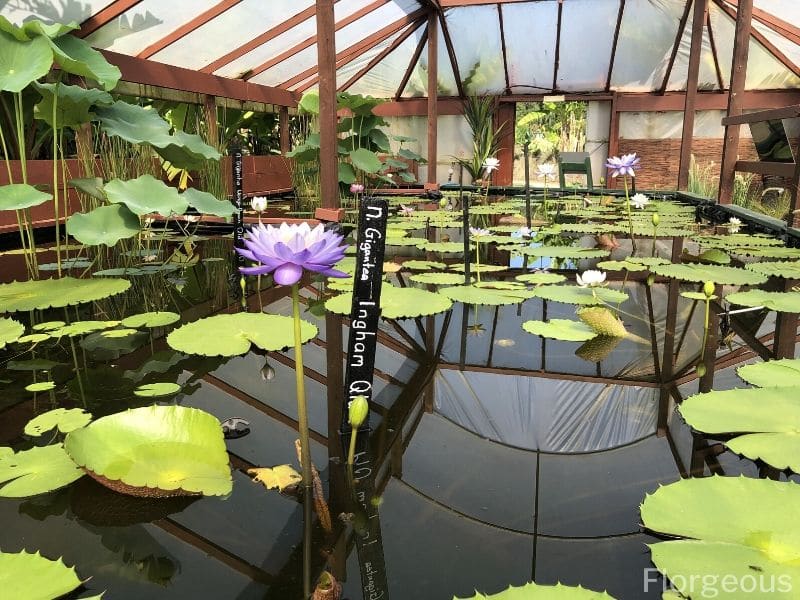
Water Lilies’ vegetative reproduction
This type of plant will produce its own rhizome, which, in turn, will grow and become another water lily, known as the daughter plant, so, in other words, they can self-reproduce (4).
Therefore, the parent plant will stay afloat, and the new plant can separate itself from the parent plant by going through a process that is referred to as the rhizome division.
Water Lilies produce seeds
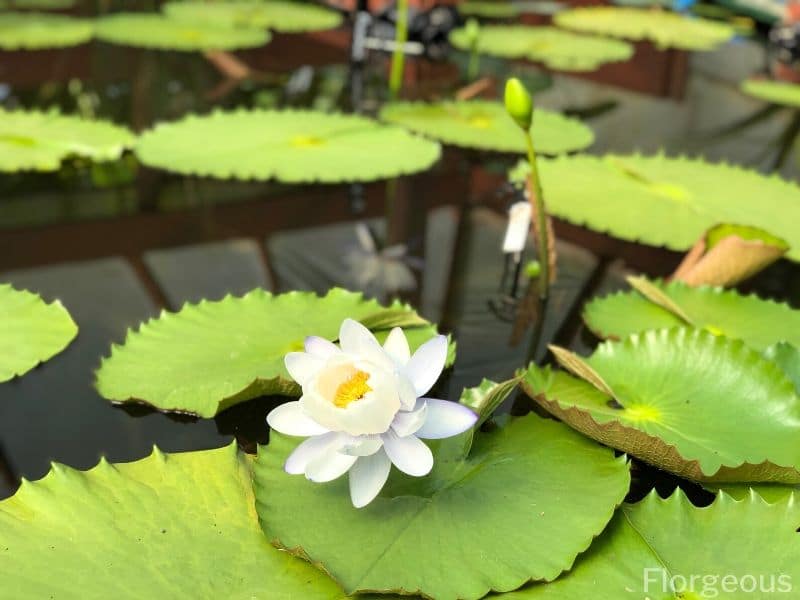
The flower releases a sweet liquid that is very fragrant and attractive to insects like bees, which are necessary insects for pollination.
Let’s assume these bees have already visited some other water lilies, then, the pollen they have collected will wash off and they will end up fertilizing the female reproductive organ, which is called stigma (5).
After a couple of days have passed, the male reproductive organ, called stamen, will produce pollen which will be carried by other pollinators, once again, in order to fertilize other plants.
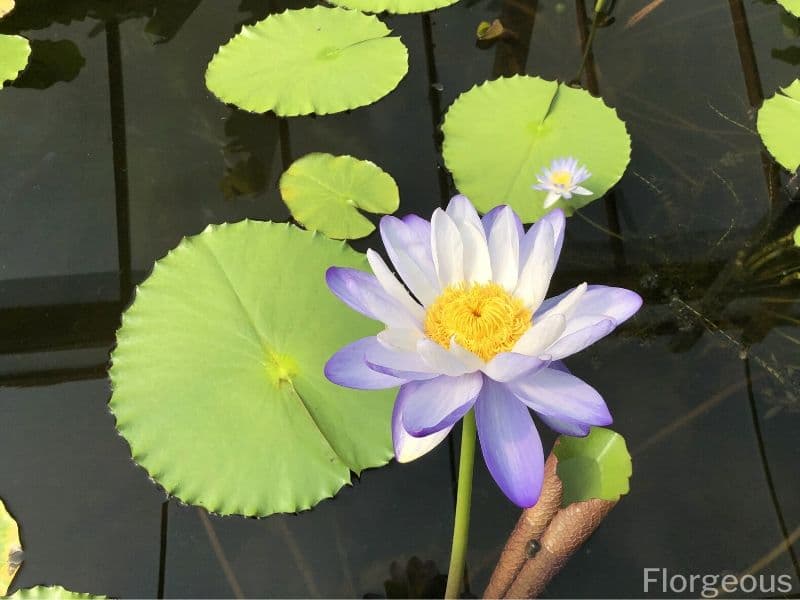
Then, water lilies will go underneath the water and start reproducing a wide range of seeds, in fact, they can be up to 2000 seeds in total. Of course, this job will take the flower a couple of weeks, as flowers tend to concentrate all of their energy into doing this.
Once they have produced the necessary seeds, they will then release them into the water, and they, in turn, will float on the surface and start spreading around.
Eventually, new plants will form.
Common Types of Water Lilies
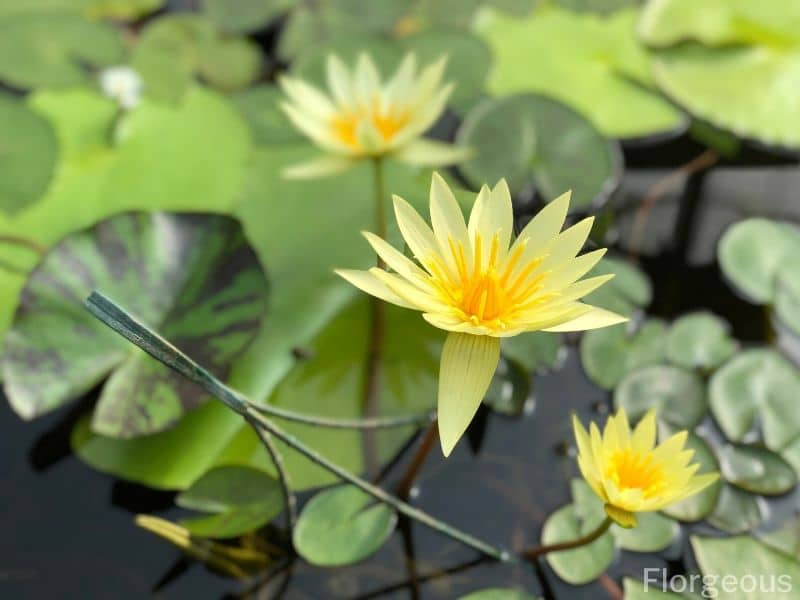
Water lilies have two subtypes: tropical or hardy (6).
If water lilies are tropical, then their flowers will bloom during the night. On the other hand, if they are hardy, then their flowers will bloom during the day.
Another difference is that tropical water lilies are annual plants (as its name suggests, annual plants will complete their life cycle and die), whereas hardy water lilies are perennial (this means that they can live for more than two years).

If you would like to have water lilies in your pond or aquarium then you should have a combination of these two subtypes, as they will complement each other very well.
Water lilies come in different sizes, shapes, and colors. However, what they all have in common is that they love water, they thrive in warm weather, and they don’t require much maintenance to keep healthy and afloat.
These are some of the types of Water Lilies:
Pink Water Lily (Nymphaea darwin)

It has light pink inner petals and dark pink outer petals, however, the flowers will only last four days. They are also very fragrant and the flowers can reach up to 7 inches. Their lily pads are round and very bright green. They are one of the most common types of water lilies.
Fragrant Water Lily (Nymphaea odorata)
One of the easiest water lilies to propagate, it is native to North America. It can grow really fast, and as its name indicates, it has very fragrant flowers. They can reach up to 7 inches in diameter, and have white petals.
Colorado Water Lily
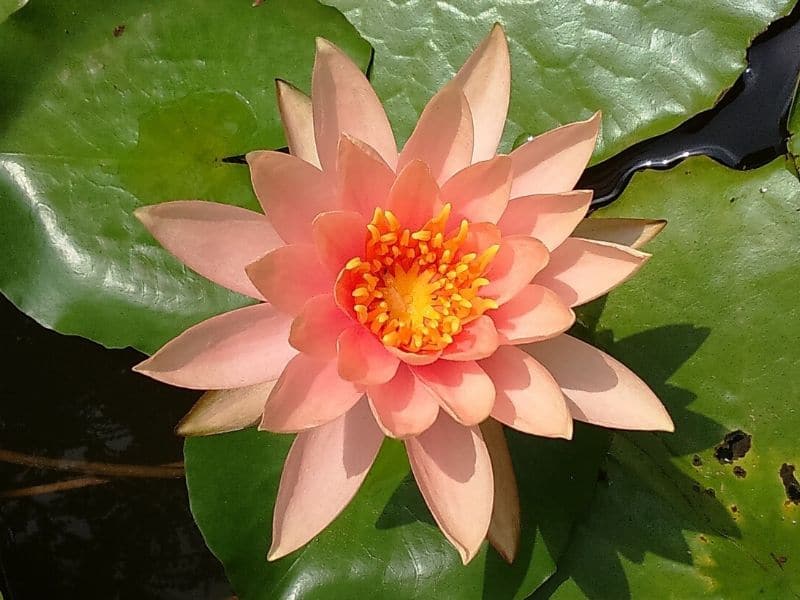
It has pink flowers and their lily pads are often seen burgundy. They can grow up to 5-feet across and prefer mild climates.
Afterglow Water Lily
One of the prettiest water lilies, they have orange petals, which is something unusual. Sometimes the flowers can be seen as pink, and they are usually very fragrant. This type of lily can reach up to 8-feet wide.
Arc en Ciel Water Lily
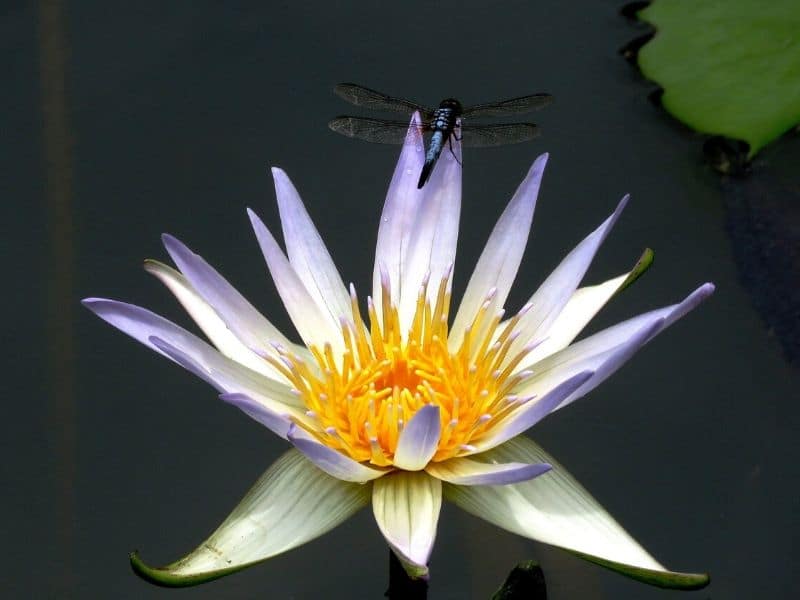
A stunning type of water lily, its lily pads are very unique because of their shape. They can also be yellow, cream, pink, and sometimes red. They bloom during the day. This plant can spread to 4-feet wide, thus they are not as big as other similar plants.
Marliacea Carnea Water Lily
They can spread up to 5-feet wide. They have subtle pink petals, and they bloom during the day. They do not thrive in very hard climates.
Rembrandt Water Lily
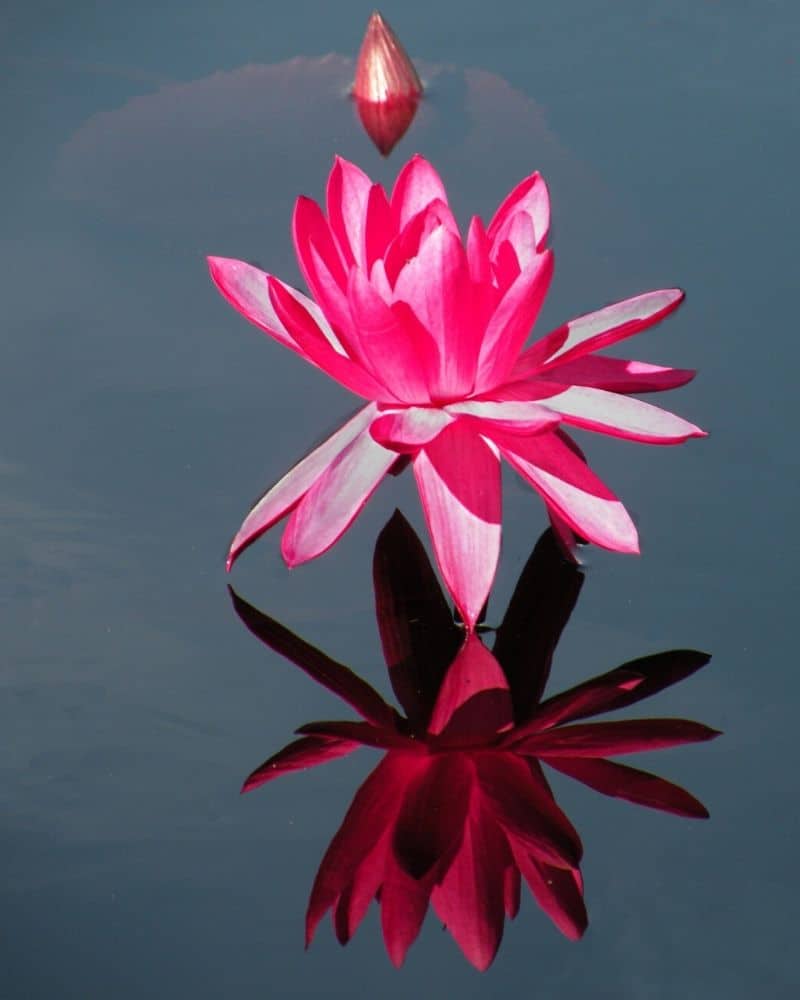
As its name suggests, this type of flower looks like it was painted by the famous artist Rembrandt. They bloom during the day and have very bright red petals. They spread up to 5 feet wide.
Alba Water Lily
This type of plant thrives in warm climates. It can reach up to 12 inches across and its flowers are white. It is also known as White Water Lily. They love being exposed to the full sun.
Mrs. George H. Pring Water Lily
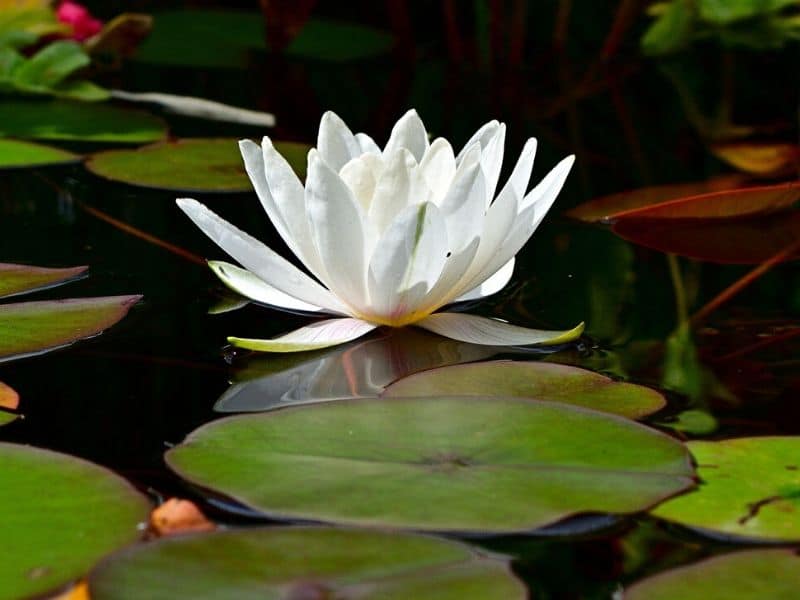
They have creamy white flowers and love being exposed to full sun. Its width can reach up to 6 feet. They are low maintenance and release a very strong scent.
Pygmaea Rubra Water Lily
Not only its name is weird, but the plant is also different as it is a dwarf variety of the water lilies plants. Its petals are bright pink but they will eventually turn to red.
Cape Blue Water Lily (Nymphaea capensis)
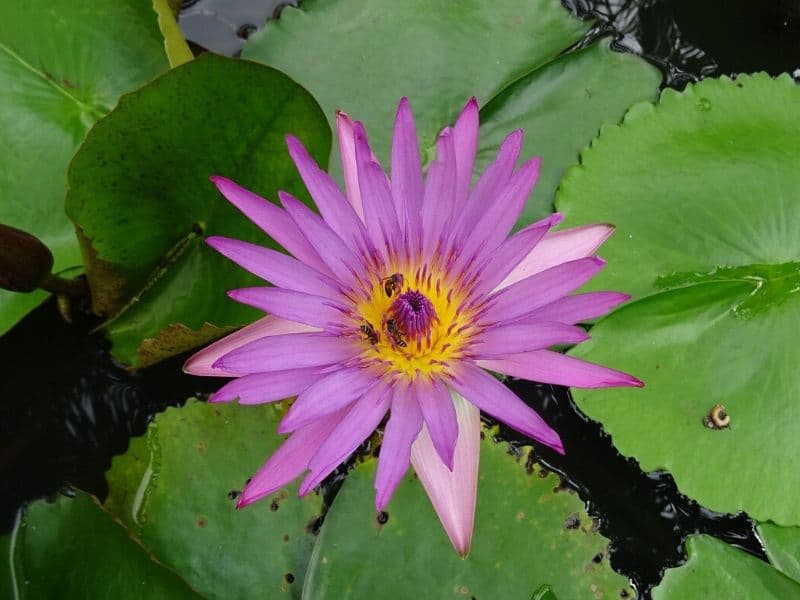
This is an unusual type of flower because it can survive in a dry river bed for a long period of time, even without rainfall. Another interesting characteristic is that the plant blooms repeatedly.
These flowers stay close at night. It thrives in a warm climate. The plant can also spread up to 8 feet. And even though the name says blue they are actually a purple color.
Midnight Water Lily
Even though its name suggests they bloom at night, this plant blooms during the day. Even though they have a small flower they are very fragrant. Its petals are lavender in color.
Carolina Sunset Water Lily
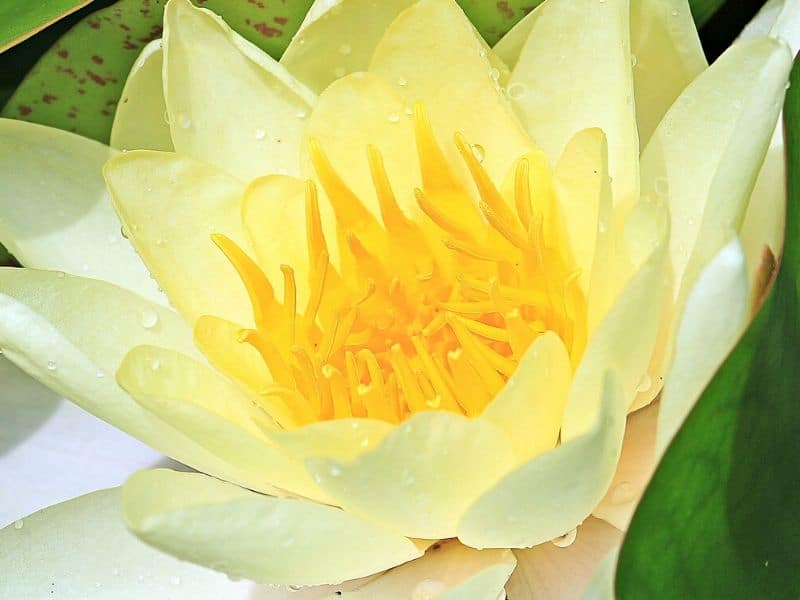
It has yellow-peach flowers and they usually grow to 8 inches wide. They bloom during the day and have a strong fragrance. They enjoy being exposed to the sun.
Chromatella Water Lily
Another beautiful flower, this small plant has yellow flowers that are very bright. They bloom during the day. It’s another dwarf variety of water lilies. It’s very delicate and only tolerates light shade and partial sun.
Pygmaea Helvola Water Lily
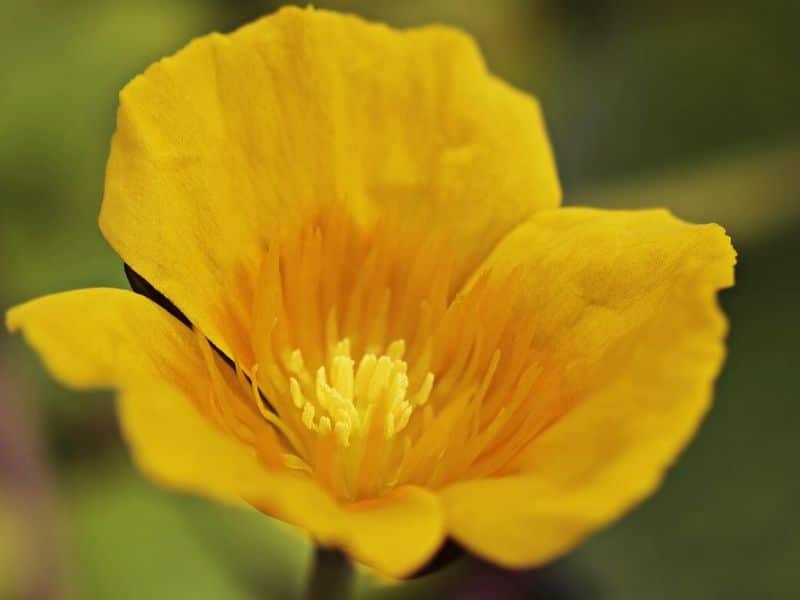
Blooms during the day. It’s another type of dwarf water lily and it can only reach 2 inches in diameter, making it almost a miniature flower. Its petals are bright yellow, and they are very attractive to bees.
Luciana Water Lily
One of the most adaptable water lilies, they only bloom during the day. It has bright pink flowers that continuously reproduce themselves throughout a very long season. They thrive in warm climates and dislike being fully exposed to the sun.
Emily Grant Hutchings Water Lily

Another night bloomer plant, this variation has dark pink petals. Its lily pads can grow up to 12 inches in diameter. They need plenty of space in order to thrive.
Giant Amazon Water Lily
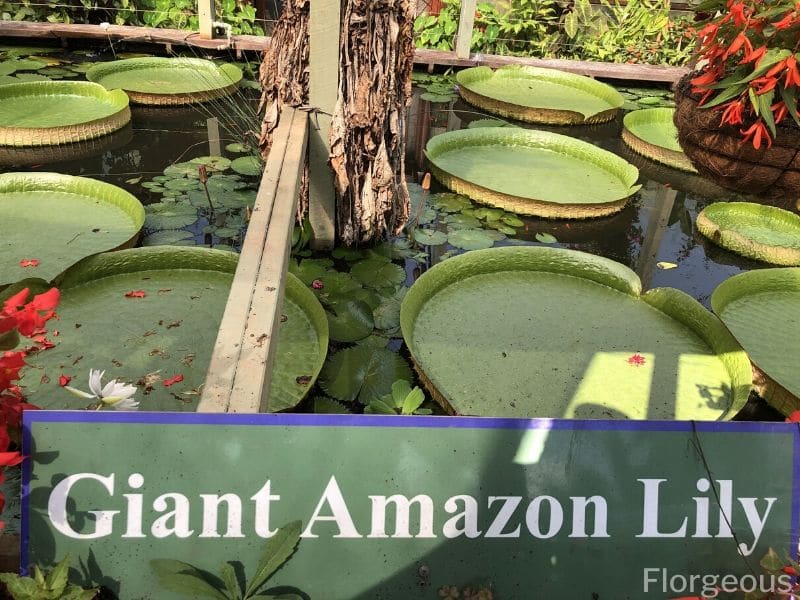
Victoria amazonica (commonly known as Amazon water lily) is the largest of the Nymphaeaceae family.
You can recognize this variety easily from its large leaves (can be as big as 3 m (10 ft) in diameter) and a long submerged stalk (can be as long as 8 m or 26 ft in length).
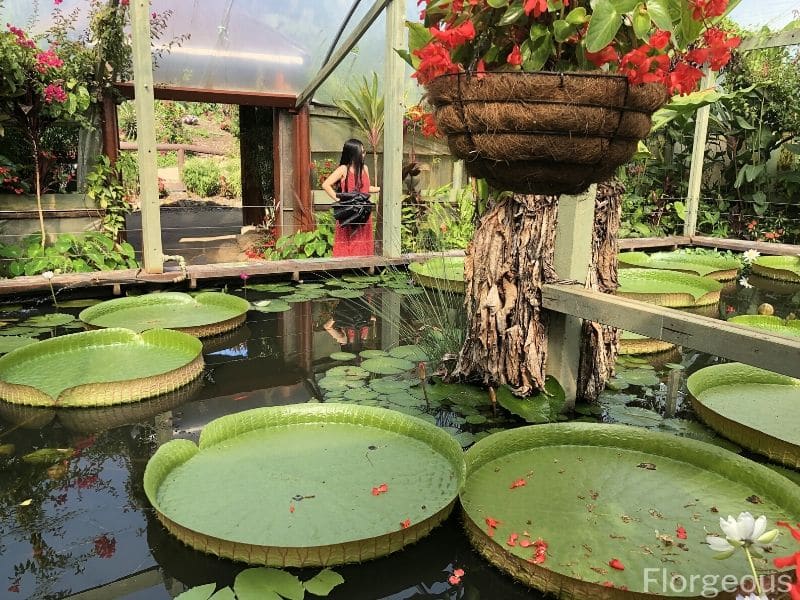
Amazon water lilies are the national flower of Guyana. They are now grown in many countries and you can often see pictures of children sitting on the leaves which can indicate how big and strong the leaves are.
What does water lily symbolize?
In Buddhism, water lily is a symbol of enlightenment and purity because these gorgeous flowers emerge from the mud but are so fragrant. There are many other meanings of water lily flower such as love, life and happiness.
Did you know that this plant is also July birth flower?
Conclusion
Water lilies are one of the most popular aquatic plants because they thrive in most climates and this is why they can be found all over the world.
If you are new to gardening and have a small to a medium pond, then why don’t you try to grow some water lilies? Your space will look and feel better afterward.
Don’t forget to explore our blog for more kinds of flowers with name and picture.
References
Reference List:
- Roe, Evelyn. (2015). The Way of the Water-Lily: reflections on the influence of Goethe’s way of science on my botanical work. 10.13140/RG.2.1.4870.8000
- Zhu, M., Zheng, X., Shu, Q., Li, H., Zhong, P., Zhang, H., Xu, Y., Wang, L., & Wang, L. (2012). Relationship between the composition of flavonoids and flower color variation in tropical water lily (Nymphaea) cultivars. PloS one, 7(4), e34335. https://doi.org/10.1371/journal.pone.0034335
- Wallace, J.B. and O’Hop, J. (1985), Life on a Fast Pad: Waterlily Leaf Beetle Impact on Water Lilies. Ecology, 66: 1534-1544. DOI:10.2307/1938016
- Gibson, P., & Gagliano, M. (2017). The feminist plant: Changing relations with the water lily. Ethics and the Environment, 22(2), 125-146. https://doi.org/10.2979/ethicsenviro.22.2.06
- Marrotte, Robby. (2011). The Utility of Nymphaeaceae Sclereids in Paleoenvironmental Research. 10.13140/RG.2.1.2091.4164 https://www.researchgate.net/publication/330185274_Determination_of_the_Usage_of_Nymphaeaceae_Leaves_in_Cosmetics.
- Yu, C., Qiao, G., Qiu, W., Yu, D., Zhou, S., Shen, Y., Yu, G., Jiang, J., Han, X., Liu, M., Zhang, L., Chen, F., Chen, Y., & Zhuo, R. (2018). Molecular breeding of water lily: engineering cold stress tolerance into tropical water lily. Horticulture Research, 5, 73. https://doi.org/10.1038/s41438-018-0086-2
- Masahiro Tani, Ayako Sawada, and Takashi Oyabu* Kanazawa Seiryo University, 10-1 Gosho, Kanazawa-shi, Ishikawa 920-8620, Japan. – source
- A water lily–inspired hierarchical design for stable and efficient solar evaporation of high-salinity brine. By Ning Xu, Jinlei Li, Yang Wang, Chang Fang, Xiuqiang Li, Yuxi Wang, Lin Zhou, Bin Zhu, Zhen Wu, Shining Zhu, Jia Zhu.
Close

